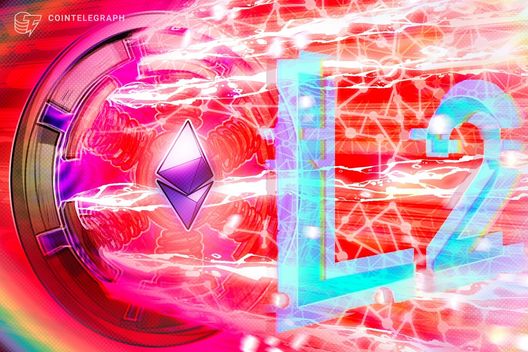Ethereum layer-2 networks, designed to enhance scalability and reduce transaction costs on the Ethereum blockchain, are now facing scrutiny over significant security and centralization problems. This critical insight comes from none other than Anatoly Yakovenko, a prominent figure in the cryptocurrency world and co-founder of the Solana blockchain.
Yakovenko’s comments highlight concerns that, despite the innovative solutions layer-2 networks provide for Ethereum, they may not be as robust as previously thought. The essence of his argument suggests that these networks could create vulnerabilities that may compromise user trust and the decentralized ethos of blockchain technology.
“The issue of centralization in Ethereum layer-2 solutions undermines the foundational principles of blockchain,” Yakovenko expressed, urging for a reevaluation of current implementations.
As the cryptocurrency landscape continues to evolve, the dialogue surrounding the security of layer-2 networks serves as a crucial reminder of the ongoing challenges facing even the most established platforms. This ongoing conversation invites participants in the crypto community to reflect on the balance between innovation and security in the rapidly changing digital currency space.
Ethereum Layer-2 Networks Security Concerns
According to Anatoly Yakovenko, co-founder of the Solana blockchain, there are significant issues affecting Ethereum layer-2 networks that could impact users and the broader cryptocurrency ecosystem. Key points include:
- Security Vulnerabilities:
- Layer-2 solutions may expose users to risks if not properly secured.
- Potential exploits could lead to financial losses for users.
- Centralization Issues:
- Some layer-2 networks are becoming increasingly centralized, which contradicts the decentralization ethos of blockchain technology.
- This centralization could lead to a single point of failure, affecting users’ trust and reliance on these solutions.
- Impact on User Experience:
- Security and centralization concerns could deter users from adopting layer-2 solutions.
- Users may seek alternatives that offer higher security and true decentralization.
- Broader Implications for Blockchain Ecosystem:
- Issues faced by Ethereum layer-2 networks may influence the overall perception of blockchain technology.
- The viability and sustainability of decentralized applications (dApps) relying on these solutions could be questioned.
Examining Layer-2 Networks: Security and Centralization Concerns
Anatoly Yakovenko, co-founder of Solana, has raised significant issues regarding Ethereum’s layer-2 networks, shedding light on the vulnerabilities related to security and centralization. This critique aligns with growing discussions in the blockchain community about the risks associated with scaling solutions and prompts a broader examination of alternative platforms.
Competitive Advantages: Solana, as highlighted through Yakovenko’s insights, demonstrates an edge in offering a more decentralization-oriented approach compared to some Ethereum layer-2 solutions. The ability of Solana to handle higher transaction speeds and lower fees appeals to developers looking for scalability without sacrificing security. With precise technology executing millions of transactions, it draws attention away from Ethereum’s potentially compromised solutions.
Disadvantages: Conversely, existing Ethereum layer-2 solutions have enjoyed significant traction and ecosystem support due to Ethereum’s established user base. Such networks can offer heightened security when functioning optimally, as many leverage Ethereum’s underlying security during periods of transaction overload. However, reliance on centralization within some layer-2 networks poses risks that could affect user trust, making them less appealing to users who prioritize these principles.
This discourse surrounding security and centralization is crucial for investors and developers. Those heavily invested in Ethereum’s ecosystem may experience friction, encountering challenges aligning with Yakovenko’s apprehensions. Meanwhile, Solana enthusiasts may find themselves in a compelling position, particularly as they promote alternatives that mitigate the issues associated with Ethereum’s scaling strategies. Blockchain developers looking for a more decentralized and secure environment will undoubtedly pay close attention to these revelations, potentially swaying their future projects and investments toward platforms like Solana.
















